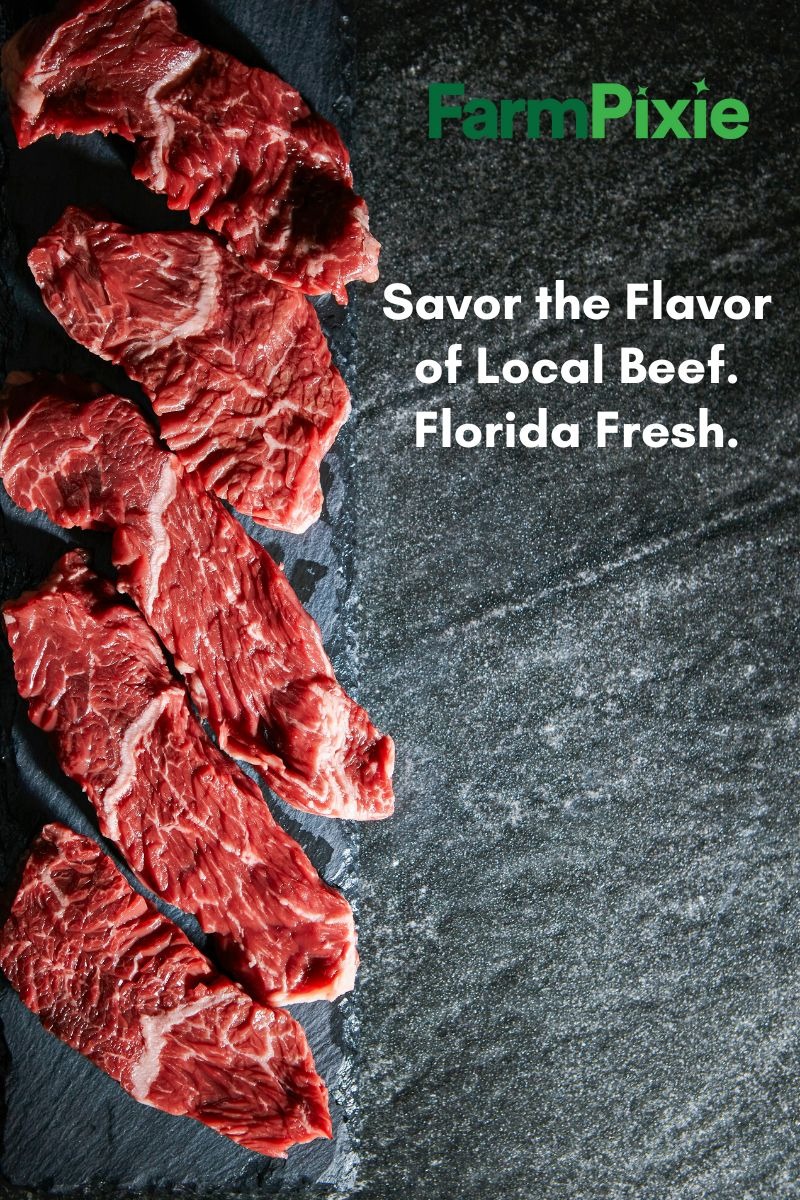High Grocery Beef Costs? Support Florida Ranches and Keep Prices in Check
News & Updates
If you’ve shopped for beef lately, you’ve probably felt sticker shock. Ground beef jumped to over six dollars a pound in June and steak is flirting with twelve dollars. U.S. beef and veal prices rose 2.4 percent from May to June 2025 and are 10.6 percent higher than a year ago
That surge flows from the worst cattle shortage since 1951, driven by drought‑stricken grazing lands, herd reductions and import bans linked to a Mexican screwworm outbreak
Why Beef Prices Are Soaring
- Shrinking Herds
Farmers have sold female cattle to cut feed costs, shrinking the breeding herd to its smallest size in decades. With fewer calves coming online, slaughter steer availability has plunged. - Drought and Feed Costs
Three years of drought in the Midwest mean less pasture and more expensive feed. Ranchers under pressure have off‑loaded more cattle, tightening supplies further. - Import Disruptions
U.S. bans on Mexican beef imports—after a New World screwworm discovery—slashed a key source of cattle
. Meanwhile, potential new tariffs on Brazilian and Canadian beef threaten to stoke costs if enacted. - Strong Consumer Demand
Despite inflation and recession worries, Americans are still buying beef at record rates. Cultural preferences and its protein punch keep demand high even as prices rise
When Might Prices Ease?
Experts project some relief this fall, when seasonal demand softens and pasture conditions improve
The USDA raised its 2025 beef production outlook by 15 million pounds—to 26.7 billion pounds—reflecting modest herd rebuilds but still warns of tight supplies through 2025 and beyond. Realistically, significant price reductions may not arrive until late 2025 or early 2026, once ranchers rebuild breeding herds and imports resume in full.
Why You Should Buy Direct to Consumer in Florida
Buying local beef straight from ranches not only lets you sidestep grocery store markups but also strengthens our Florida communities. Every dollar you spend at a farm goes directly to the people who raise the animals.
- Vincent Cattle Co. (Live Oak) specializes in grass‑finished beef raised on native pasture.
- Young Family Farmacy (Dover) offers humanely raised Angus beef, hormone and antibiotic free.
- The Farmer’s Fork (Frostproof) sells pasture‑raised beef alongside seasonal produce.
- Rocking K Farmstead (Cross City) delivers family‑farmed beef with transparent animal welfare practices.
- Bernal Homestead (Live Oak) invites customers to visit their ranch and pick up custom‑cut beef.
Impact of the New Australia Export Channel
In July 2025, Australia lifted its 20‑year ban on U.S. beef, allowing American ranchers to ship product across the Pacific for the first time since the BSE scare in 2004. But don’t expect this to flood U.S. supermarkets or drive prices down. In 2024 the U.S. sent just 269 tons of beef to Australia—barely a blip against domestic production of over 26 billion pounds
Economists agree that even if exports double or triple, the volumes are too small to meaningfully free up supply at home. With the U.S. herd at its smallest size in more than six decades and feed costs still high, diverting premium cuts abroad may actually nudge grocery‑store prices up by a few cents rather than lower them
In short, the Australia deal is a symbolic win for U.S. ranchers and premium markets overseas, but true domestic price relief will still hinge on herd rebuilds, improved pasture conditions and resumed imports—not on what gets shipped to Sydney or Melbourne.
How to Save by Buying in Bulk
When prices are high, bulk buying can help:
- Go in with Neighbors or Family
Split a quarter or half‑beef, which often costs 20–30 percent less per pound than retail cuts. - Freeze for Later
Portion the meat into meal‑sized bags and freeze. You’ll enjoy your purchase over months—long after grocery prices creep even higher. - Plan Seasonal Meals
Use ground beef for summer tacos and brisket roasts in winter. Bulk buys let you lock in cost savings year‑round.
Supporting Local Ranchers Builds Community
Choosing direct‑to‑consumer beef keeps small‑scale ranchers in business and fuels local economies. It reduces transport emissions, means fresher meat on your table and helps preserve rural landscapes. When Florida families order from Vincent Cattle Co. or Bernal Homestead, they’re investing in resilient communities and stronger food security.
With beef prices at record highs, now is the moment to support Florida’s direct‑to‑consumer ranchers. Head to FarmPixie to find and order from local producers near you. Tag friends who need to know, team up on a bulk purchase and taste the difference of farm‑fresh beef.
Order local beef today at farmpixie.com and keep our Florida food system thriving.
